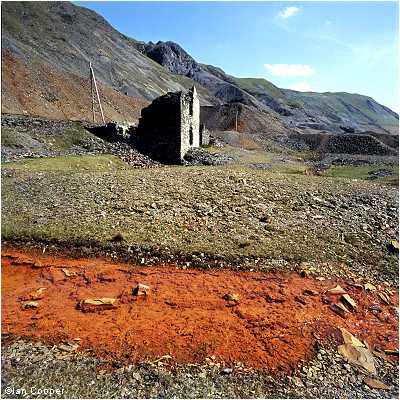Cwmystwyth Mine |
||
Cwmystwyth Lead Mine During the 18th century ore was extracted from the hillside around Cwmystwyth by hushing, this process involves releasing a large quantity of stored water to scour the surface ground cover away, exposing the rock and mineral veins beneath. A reservoir from these operations still exists.
By 1844 most of the known reserves of ore had been worked out and an investigation was carried out to find potential new lodes. By 1850 the lease for the mine had changed hands again and the mine was producing over 1,000 tons of galena (lead ore) each year, various new rich ore bodies were found and the venture prospered. During the 1860's the search was on yet again for new reserves, in the process the mine reached it's lowest level at 54 fathoms.
At the turn of the century the mine turned it's attentions to zinc ore rather than lead. At this time money was invested in new buildings and machinery, a network of tramways, and inclines were constructed to move the ore across the site from adits higher up the hillside. Unfortunately the low price of ore at the time was not enough to repay the investment; the mine struggled on until it closed in 1921.
A number of levels still remain open and contain a range of mining artefacts, from ventilation ducting and abandoned trucks, to hoppers and timber roof supports. In Level Fawr an impressive inclined skip way still contains it's angled rails supported by great timber beams, whilst else where in the level one of the matching skips can still be seen.
|
||
| All photographs are the work and copyright of Ian Cooper. | ||
